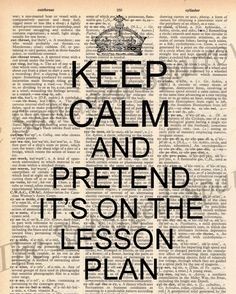Assessment is one of the most important tools in a teachers tool box. Many assume that assessment is just exams and essays, however that is not the truth. While exams and essays have their place in the education system, other forms of assessment are just as important.
As teachers, how can we possible administer a test, without first knowing if the students are prepared for this test. We do this by using different forms of formative assessment. This is a tool not only for the teachers to know where the students are at, but for the students themselves. By using formative assessment, the students are able to see where they may need extra help. This allows students to take more ownership of their learning.
In my practicum, I used a variety of formative assessments. I often used crosswords, illustrations, small paragraphs, poems, and finally tickets in the door. All these small assignments allowed the students to show their learning and allowed me to gauge where they were at in this learning.
It is also important to use a large variety of summative assessments as well. Tests and essays don’t allow all learners to show their skills. Students that are more creative or artistically inclined, may have an easier time showing what they have learned in other ways. Therefore, artistic final assessments at the end of units can be very effective. For example, in my Grade Nine Poetry class students created posters reflecting their knowledge of poetic terms using song lyrics. This allowed for a creative outlet that was not only effective, but fun as well!
Now, I am not suggesting that we get rid of exams and essays. I think both of these assessment strategies have their place within our educational practice. The key is variety. We need to give our students a variety of assessments in order to convey their learning.
This contributes to recognizing the diverse needs of a student. By using formative assessment we are able to see exactly, which students need more help where. We can also gauge the different learning styles of students and can teach to these various styles. The more we understand how students learn, the better we can meet their needs.
PS. Below i have attached some of the assessments I used in my practicum
TICKET IN THE DOOR
Name________
What is a “YUPPY” ?
2) What is a LATCHKEY Kid and which generation did they belong too.
3) Youth culture tended to fragment into subgroups, identify two of these groups.
4)Generation X was described as which of the following?
calm and polite
underemployed, overeducated, and unpredictable
lazy
none of the above
5) Generation X was from ____ to ____ and Generation Y was from ____ to ____
1970 to 1990’s, 1965 to 1976
1965 to 1976, 1970’s to late 1990’s
2005 to 2011, 2012 to 2014
1980-2000, 2000- now
“DONT FORGET THE LYRICS”
Poetic Devices in Music
Ms. Fresu
English 9
Assignment :
Choose a song that has 4 to 5 DIFFERENT poetic devices within it. Your task is to identify all of the poetic devices within your chosen song. You will then create a poster that not only identifies these devices, but further explains why they are classified as such. You will have 2 full classes to work on this assignment, on the 3rd day we will present them to the class.
Criteria:
Your song must have at least 4 to 5 DIFFERENT poetic devices.
You must identify all devices within the song
You must explain why they are classified as such
You must explain why you think the artist choose to use these devices and what ideas they highlight
Your poster must be eye-catching (colourful and organized)
Your poster must have the lyrics on chosen song displayed on it.
REMINDER:
YOUR SONG MUST BE SCHOOL APPROPRIATE AND MS. FRESU MUST APPROVE YOUR SONG CHOICE.
Name ______________________________________________ Date ___________________________
◆◆
◆Create Your Own Coat of Arms
There are very specific rules for designing a coat of arms.
- Partition the background with lines. You may use any of the designs pictured in the margins or create a design of your own.
- Choose a combination of the following colors: black, green, red, purple, gold or silver to color in your background.
- Draw a fanciful animal as part of your design.
- Complete your coat of arms with any personal or family symbols.
